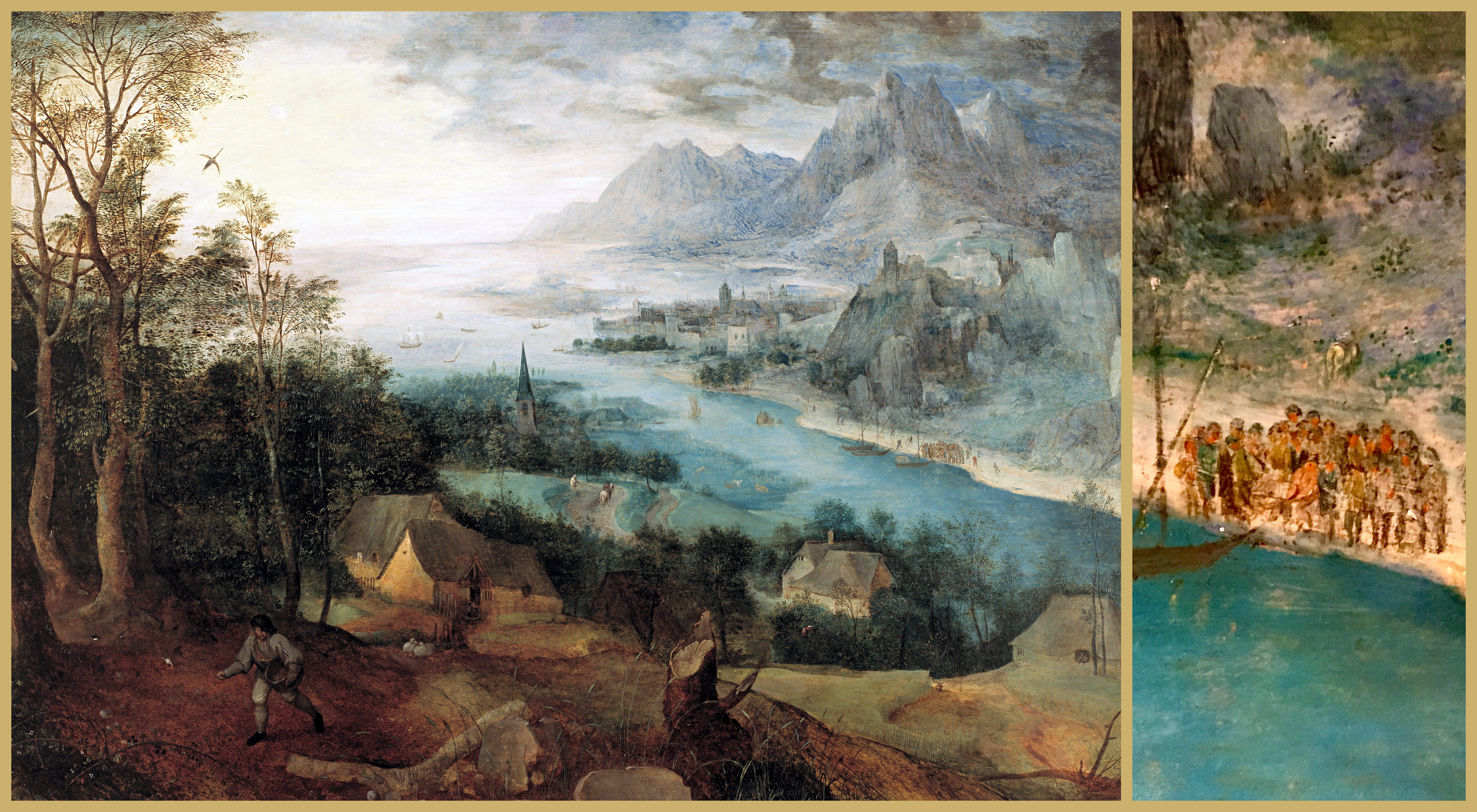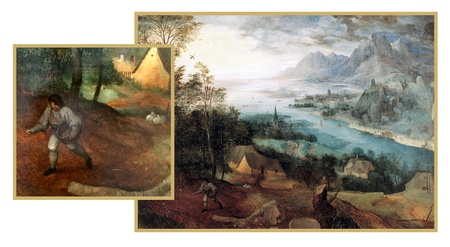
Pieter Bruegel, the Elder took pleasure in burying the lead. Many of his mature works had lofty, moralizing intentions, but their main representational strategy was to record the everyday messiness of life in 16th-century Flanders. Later generations called him “Peasant Bruegel” for this reason. I am struck by how even his most seemingly celebratory works, for example, Peasant Wedding (1567, Kunsthistorisches Museum, Vienna), are shot through with observations of bad behavior (don’t get me started on the proliferation of still darker imagery in works like his monumental The Triumph of Death [1562-63, Prado, Madrid]). Usually with a strong dose of humor, Bruegel’s works performed stinging social critiques.
The Timken is fortunate to be counted among just a handful of museums in North America that has a major painting by Bruegel the Elder in its permanent collection. Parable of the Sower was one of the last works that Amy Putnam actively participated in acquiring for us, just months before her death in 1958, and against the advice of her paid art consultant, Alfred Frankfurter. The most spiritually aware of the three Putnam sisters, Bruegel’s painting clearly touched Amy during her final months of life. After its purchase, Parable of the Sower, was put on display at the National Gallery of Art in Washington, DC until the new Timken Art Gallery opened to the public, in 1965. Because it is a delicate oil painting on a wooden panel, the work rarely leaves San Diego.
At first glance Parable of the Sower reads as a highly ambitious landscape. Minute description—every leaf in the stand of trees at left is detailed—is balanced by the artist’s interest in soft, atmospheric perspective. In the same way, the implied curvature of the earth and dramatically vertical mountain range in the upper right corner testify to Bruegel’s equal strengths at worldly observation and imaginative invention. Most careful viewers will eventually take note of the diminutive figure in the left foreground: the sower. Readers familiar with the bible may associate this figure with the Book of Matthew, where this laborer is conjured as part of a lesson about perseverance and sharing goodness. Indeed, Brueghel emphasizes this narrative by including hungry birds devouring the seeds as soon as the sower casts them from the basket on his hip. In the middle ground Bruegel suggests that fields flourish nonetheless. Still further away, and frequently missed by casual viewers, a sizeable crowd gathers near a boat on the banks of the lake/river. It is here, in the distance and without compositional fanfare, that Bruegel chooses to represent Christ delivering his eponymous sermon.
Although he seldom made it obvious, Bruegel loved to telescope the messages his works contained. In Parable of the Sower, he counsels us to take in the bigger picture, have some humility about the frustrations of daily life, never give up.
